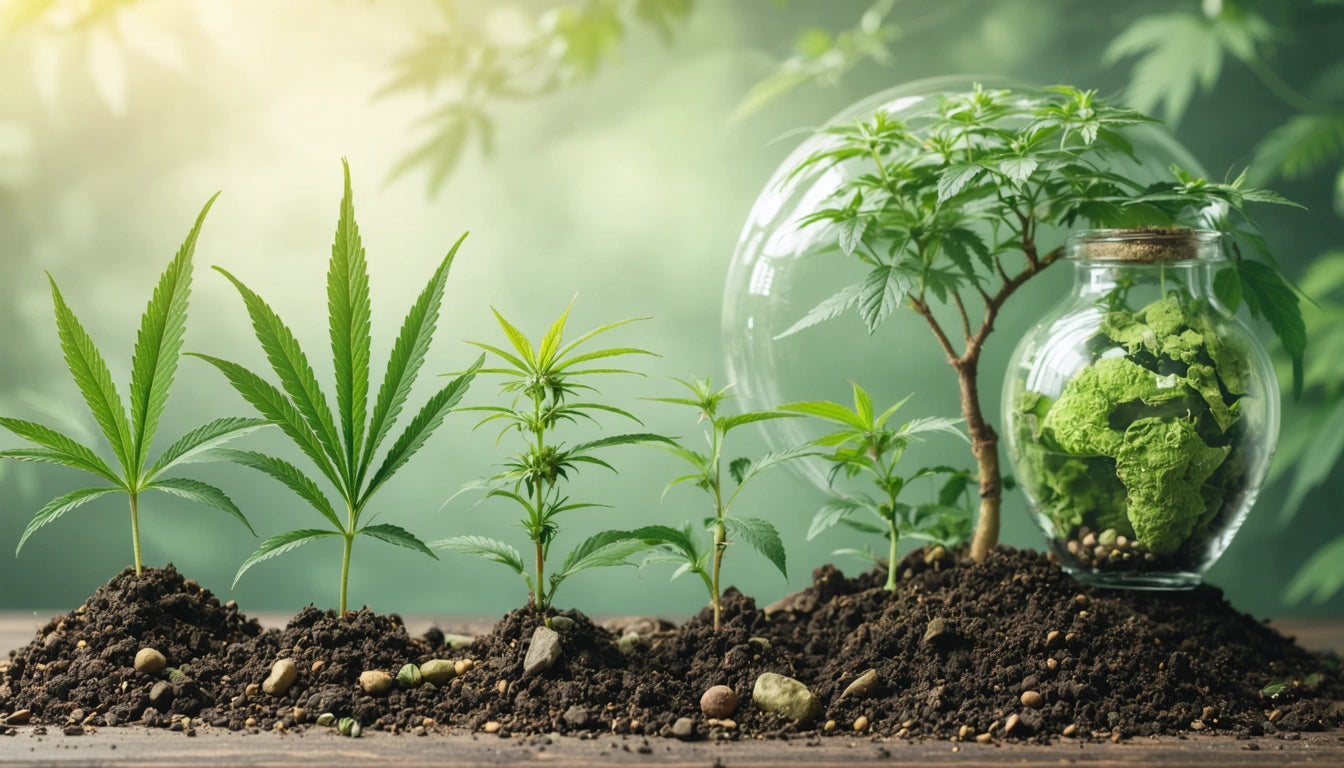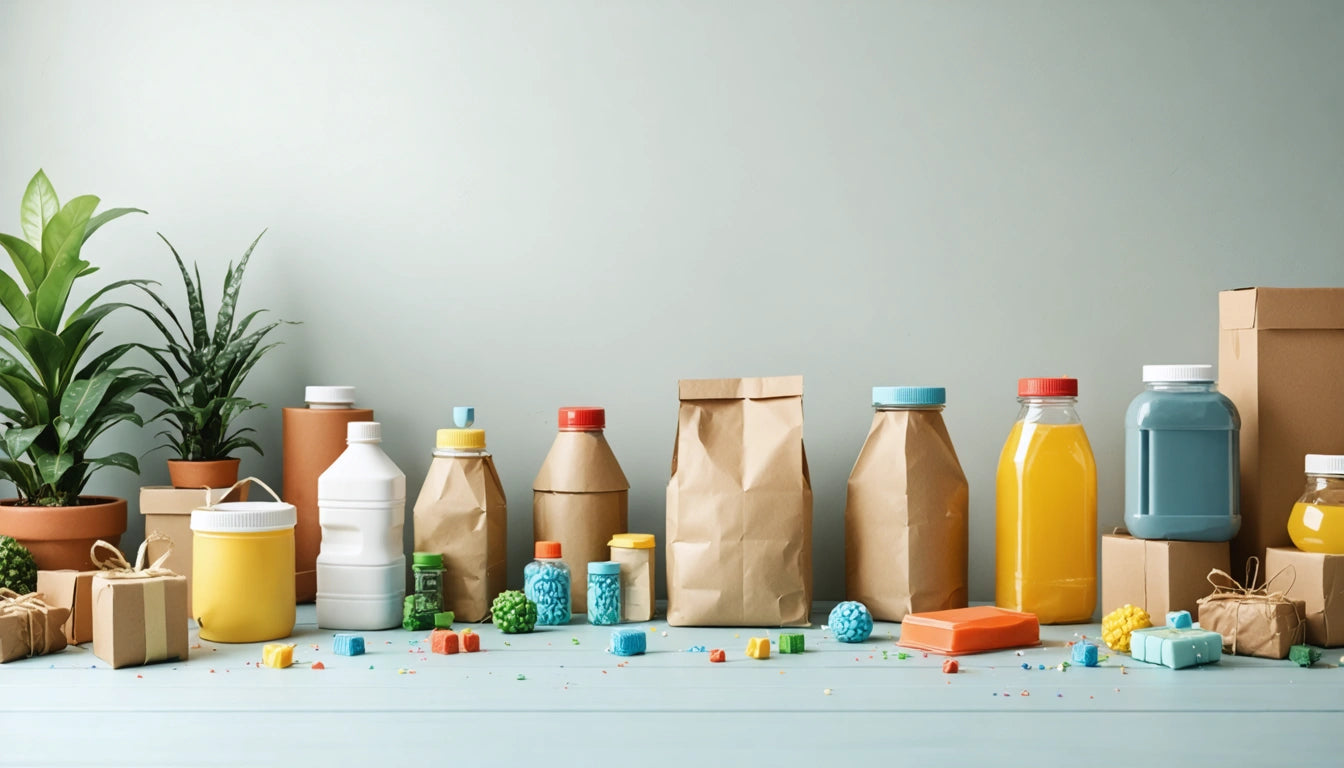Table of Contents
- Understanding the Carbon Footprint of Cannabis Packaging
- Measuring Carbon Impact: Methodologies and Tools
- Material Selection: Environmental Impact Comparisons
- Design Optimization for Carbon Reduction
- Balancing Sustainability with Compliance Requirements
- Actionable Strategies for Reducing Packaging Carbon Footprint
The cannabis industry faces growing scrutiny regarding its environmental impact, with packaging representing a significant portion of its carbon footprint. As regulations require extensive packaging for compliance, brands must balance protection and sustainability. Understanding how to measure and reduce packaging carbon emissions has become essential for environmentally conscious cannabis businesses.
Understanding the Carbon Footprint of Cannabis Packaging
The carbon footprint of cannabis packaging encompasses emissions generated throughout its lifecycle, from raw material extraction to end-of-life disposal. According to industry statistics, packaging waste constitutes approximately 30% of all cannabis industry waste, with plastic containers being the primary contributor.
Key factors influencing packaging carbon footprint include:
- Material production emissions
- Manufacturing process energy consumption
- Transportation distances and methods
- End-of-life management (recycling, composting, or landfill)
- Volume-to-product ratio (excess packaging)
Measuring Carbon Impact: Methodologies and Tools
Accurate measurement forms the foundation of any carbon reduction strategy. Cannabis companies can utilize several approaches to quantify their packaging emissions:
Life Cycle Assessment (LCA)
LCA evaluates environmental impacts throughout a product's entire lifecycle. For cannabis packaging, this includes material extraction, manufacturing, distribution, use, and disposal. Several software tools can help calculate these impacts, though they require detailed input data.
Carbon Calculators
Simplified carbon calculators offer a more accessible starting point. Many packaging suppliers provide basic carbon footprint estimates for their products. For precise measurements, accurate weighing equipment helps quantify material inputs and outputs, enabling more precise carbon calculations.
Material Selection: Environmental Impact Comparisons
Material choice significantly impacts packaging carbon footprint. Common cannabis packaging materials ranked by typical carbon impact (lowest to highest):
1. Recycled Paper and Cardboard
Recycled paper products generally have the lowest carbon footprint, especially when sourced locally. They're also highly recyclable, creating a circular economy opportunity as discussed in this comparison of recycling versus composting.
2. Bioplastics
Plant-based bioplastics can offer carbon advantages over petroleum plastics, though their benefits depend on sourcing and end-of-life management. The question of whether bioplastics are truly sustainable requires careful evaluation of specific products.
3. Glass
While energy-intensive to produce, glass offers durability and infinite recyclability. Its carbon impact improves significantly when recycled content is incorporated and when products are designed for reuse.
4. Traditional Plastics
Petroleum-based plastics typically have the highest carbon footprint, especially when virgin materials are used. However, lightweight plastic designs can sometimes offset this through reduced transportation emissions.
Design Optimization for Carbon Reduction
Beyond material selection, thoughtful design can substantially reduce carbon impact:
- Minimalist packaging that reduces material volume while maintaining protection
- Right-sizing containers to eliminate excess space and materials
- Designing for disassembly to facilitate recycling or composting
- Eliminating mixed materials that complicate recycling
Innovative designs that maintain child-resistance while reducing material usage represent a significant opportunity for carbon reduction in the cannabis industry.
Balancing Sustainability with Compliance Requirements
Cannabis packaging faces unique regulatory challenges that can complicate sustainability efforts. Child-resistance requirements often necessitate additional materials or complex designs. However, balancing compliance and sustainability is increasingly possible as innovative solutions emerge.
Strategies for maintaining compliance while reducing carbon impact include:
- Selecting certified child-resistant designs that use minimal materials
- Utilizing sustainable materials that meet regulatory standards
- Implementing reusable packaging programs where regulations permit
- Working with regulators to advocate for sustainability-friendly compliance options
Actionable Strategies for Reducing Packaging Carbon Footprint
Cannabis brands can implement several practical approaches to reduce their packaging carbon footprint:
1. Supplier Partnerships
Work with packaging suppliers committed to sustainability. Ask specific questions about their sustainability practices and carbon reduction efforts. Request carbon footprint data for different packaging options to make informed decisions.
2. Packaging Take-Back Programs
Reusable packaging initiatives can dramatically reduce carbon emissions by extending product lifecycles. Several dispensaries have successfully implemented container return programs, offering incentives like discounts for participation.
3. Consumer Education
Develop clear recycling instructions for your packaging. When consumers properly dispose of packaging, its lifecycle carbon impact improves significantly. QR codes linking to detailed disposal information can be particularly effective.
4. Transparent Communication
Communicate your carbon reduction efforts honestly, avoiding greenwashing pitfalls. Quantify improvements whenever possible and acknowledge areas still needing work. This builds consumer trust while positioning your brand as environmentally responsible.
The journey toward lower-carbon cannabis packaging requires commitment and innovation, but the benefits extend beyond environmental impact to include cost savings, brand enhancement, and market differentiation. By measuring current impacts and implementing targeted reduction strategies, cannabis companies can significantly decrease their packaging carbon footprint while maintaining product integrity and regulatory compliance.











Leave a comment
All comments are moderated before being published.
This site is protected by hCaptcha and the hCaptcha Privacy Policy and Terms of Service apply.